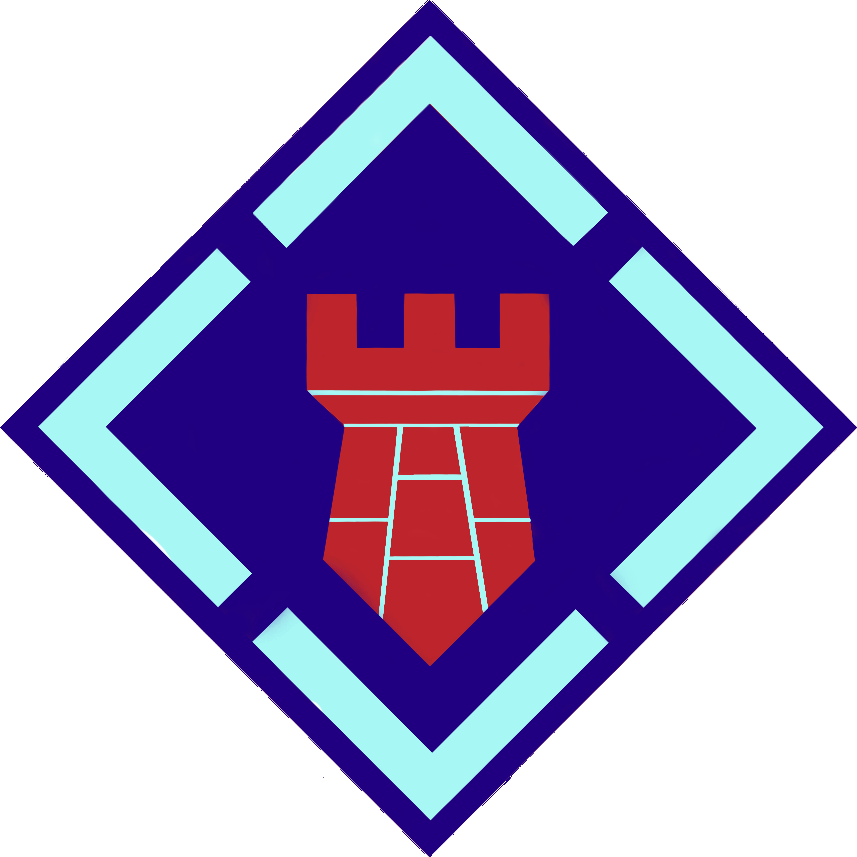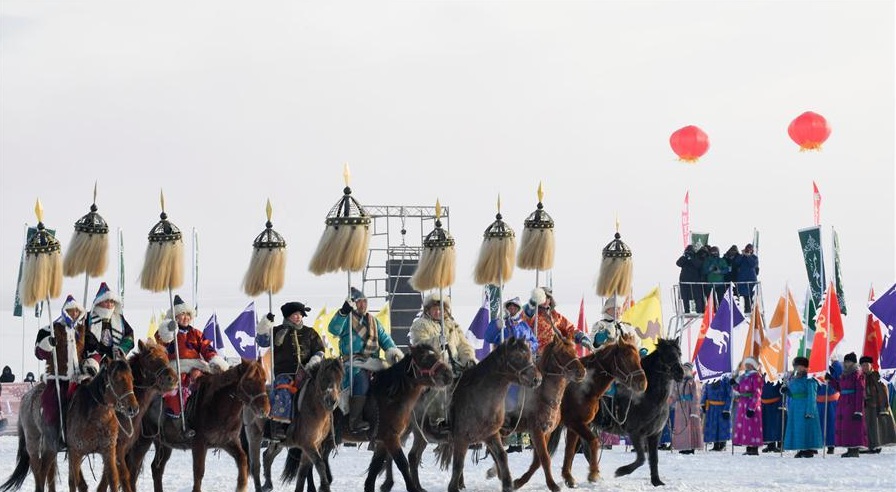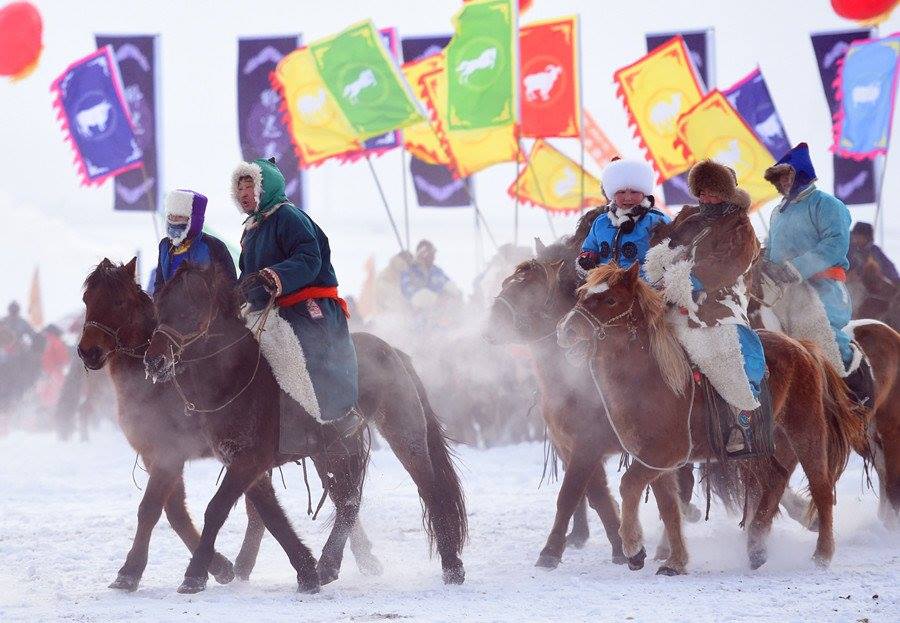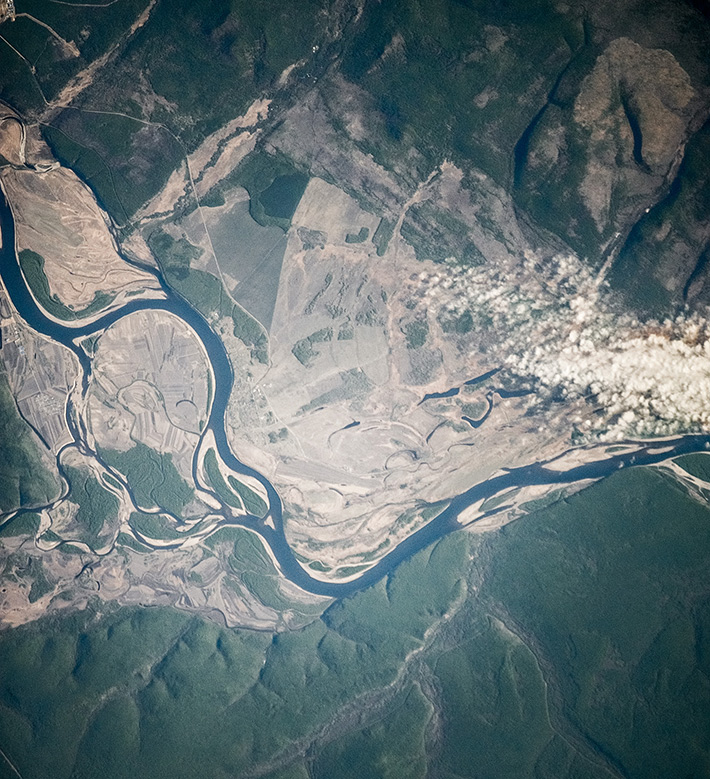







 Shades of Time | Trails of the Century
Shades of Time | Trails of the Century Geographically, the Amur-Tumen-Gobi network (ATG) encompasses the Russian Far East, Inner Manchuria and the Gobi Desert. Vastly, the ATG network advocates environmental research on the estuary formed from the Amur River to improve development of the ecosphere. Likewise, the Shilka and Argun rivers, which flow into the Gobi Desert from northeast China innovates regional development for climate security. Particularly, the ATG network invigorates environmental research for new agencies, conglomorates, and local businesses while bridging various fields of environmental science. Simultaneously, the ATG network is expanding the infrastructure for a constellation network over the tributaries of Inner Mongolia as environmental protection policies appropriate natural resources. Economically, the ATG network establishes a hotbed for climate security as Gobi Desert reforestation projects such as: M Square, Dawn Day, and Track Stats become a mainstay. Accordingly, the ATG network accelerates the process for multi-national cooperation with an array of business solutions ranging from industrial productivity to environmental protection. Furthermore, the ATG network includes cooperation framework for HEAD and STEM initiatives within the Shanghai Cooperation Organization.
Geographically, the Amur-Tumen-Gobi network (ATG) encompasses the Russian Far East, Inner Manchuria and the Gobi Desert. Vastly, the ATG network advocates environmental research on the estuary formed from the Amur River to improve development of the ecosphere. Likewise, the Shilka and Argun rivers, which flow into the Gobi Desert from northeast China innovates regional development for climate security. Particularly, the ATG network invigorates environmental research for new agencies, conglomorates, and local businesses while bridging various fields of environmental science. Simultaneously, the ATG network is expanding the infrastructure for a constellation network over the tributaries of Inner Mongolia as environmental protection policies appropriate natural resources. Economically, the ATG network establishes a hotbed for climate security as Gobi Desert reforestation projects such as: M Square, Dawn Day, and Track Stats become a mainstay. Accordingly, the ATG network accelerates the process for multi-national cooperation with an array of business solutions ranging from industrial productivity to environmental protection. Furthermore, the ATG network includes cooperation framework for HEAD and STEM initiatives within the Shanghai Cooperation Organization.
Strategically, the ATG network tracks industrial productivity with the South Atlantic-PAC as military cooperation between Russia, China, India, Iran and Mexico improves the security infrastructure for the Global South among other global initiatives involving the Pacific-Atlantic coastlines. Skillfully, the South Atlantic-PAC improves development of the sea-level space technique (SLS) on the ATG network which fuels climate security. Meanwhile, the ATG continues a friendly rival with the Tigris-Euphrates network (TEN) as advanced military research from the Caspian Sea sparks fiscal ingenuity. Recently, Russian President Vladimir Putin has directed the draft of regular troops to increase the effectiveness of climate security as natural disasters and emergency situations occur from the growing ecosystem.
Productively, cooperation for outer space research using satellite constellation networks (which are capable of orbiting deep space) between Russia, China, India and Mexico is deepening. Directly, Turkey, Iran and Afghanistan have weighed their respective interests in such military venture. Hence, the ATG network maintains a major commitment to climate security. Effectively, new constellation networks add dimension to research while identifying unique navigation fields for studying various elements of the ecosphere. Progressively, climate security on the ATG network continues to pave the future as bio-diversity innovates SCO members.
 Increasingly, the climate of Mongolia has impact on the ecosystem as its rainy season is expected to grow and summer temperatures trend downwards with cloudier conditions. Historically, the climate of Inner Mongolia has directed centuries of economic planning as cultivation techniques drive environmental science and military development. Candidly, the 1st Khagan of the Mongolian Empire created military strategies for the Silk Road during the 12th Century. Presently, Inner Mongolia is enriched with farming, sheep, goat and reindeer herding. Distinctly, the Greater Khingan Range is deeply forested as wine vineyards expand along basins of the Songhua River which joins the Amur River in Tongjiang, Heilongjiang. Zoo-geographically, the Mongolian plateau is deep-rooted with wildlife from the regions of Tibet, Afghano-Turkistan, Siberia, and the North-Chinese-Manchurian. Brilliantly, the protected areas for mammals such as: grey wolves, Bactrian camels, snow leopards, Gobi bears, red foxes, and wildcats ensure that wildlife preservation remains a top priority on the ATG network. Naturally, the ATG network adds venture to municipal corporation which intensifies climate security among SCO members.
Increasingly, the climate of Mongolia has impact on the ecosystem as its rainy season is expected to grow and summer temperatures trend downwards with cloudier conditions. Historically, the climate of Inner Mongolia has directed centuries of economic planning as cultivation techniques drive environmental science and military development. Candidly, the 1st Khagan of the Mongolian Empire created military strategies for the Silk Road during the 12th Century. Presently, Inner Mongolia is enriched with farming, sheep, goat and reindeer herding. Distinctly, the Greater Khingan Range is deeply forested as wine vineyards expand along basins of the Songhua River which joins the Amur River in Tongjiang, Heilongjiang. Zoo-geographically, the Mongolian plateau is deep-rooted with wildlife from the regions of Tibet, Afghano-Turkistan, Siberia, and the North-Chinese-Manchurian. Brilliantly, the protected areas for mammals such as: grey wolves, Bactrian camels, snow leopards, Gobi bears, red foxes, and wildcats ensure that wildlife preservation remains a top priority on the ATG network. Naturally, the ATG network adds venture to municipal corporation which intensifies climate security among SCO members.
Environmentally, the ATG network is poised with centinnial development on the New Silk Road economic belt. Fortuitously, the New Silk Road economic belt accomodates regional development as advance military research progresses on the ATG network. Reliably, climate security is tracked on the ATG network which delivers bio-diversity from Inner Mongolia to SCO members. Realistically, expansion of the Songhua River basin generates an arrangement of renewed wildlife and plant species. Hence, the expansion of wildlife sanctuaries accompany autonomous plans for land preservation while economic expansion begins to flourish for SCO members.
1st Quarter Highlights
|
|